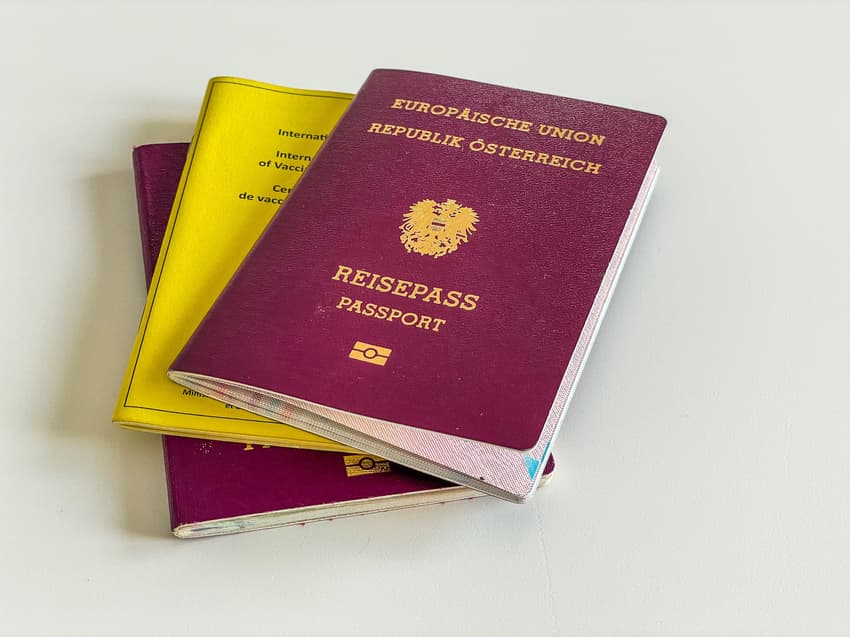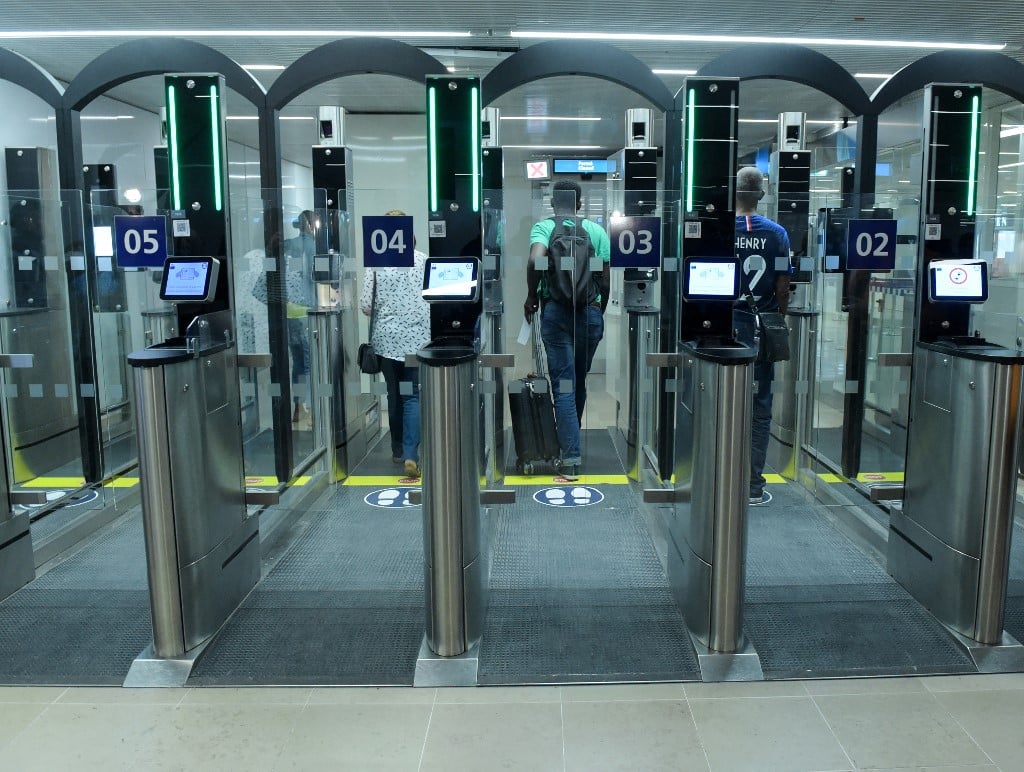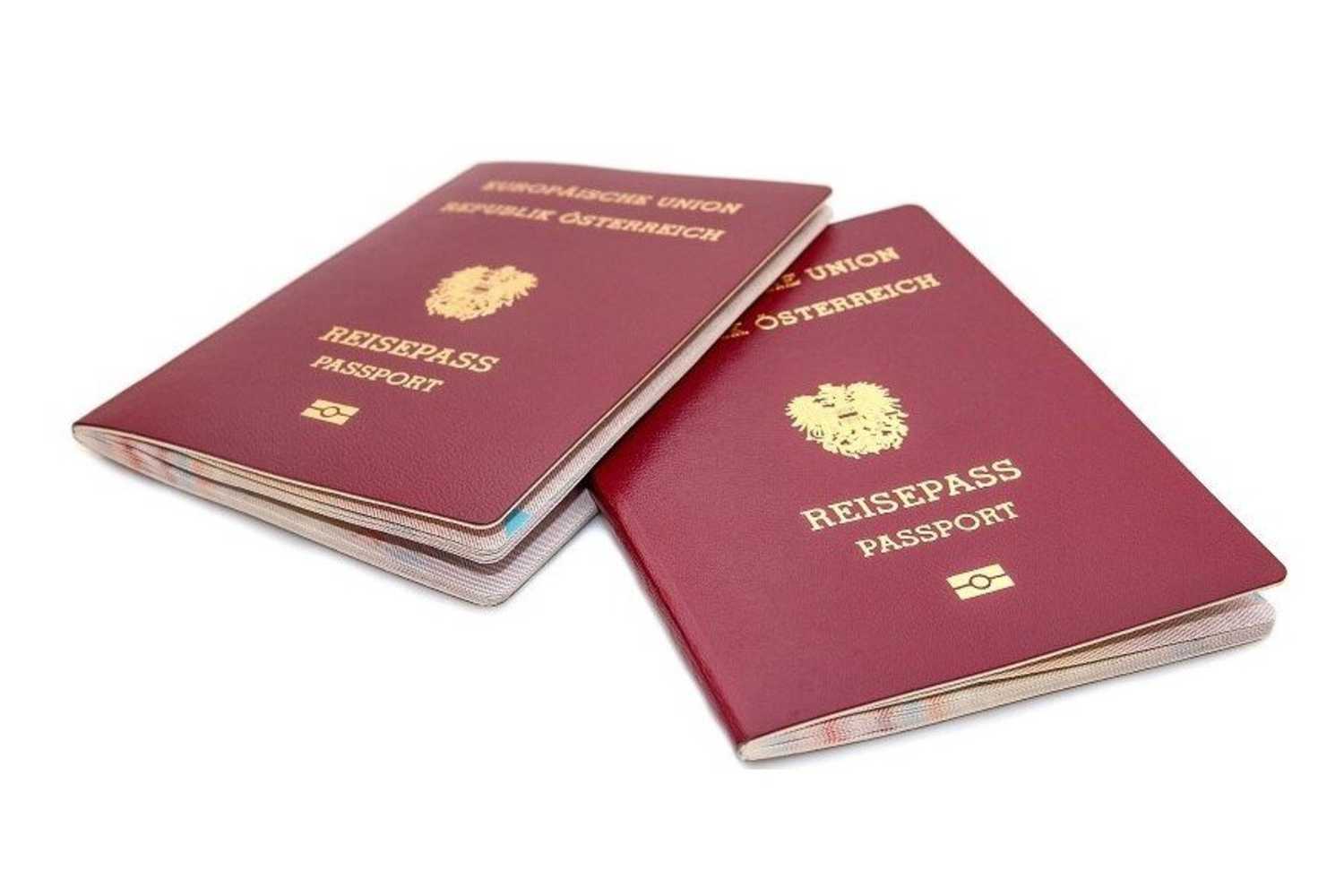Passports: What are the rules for dual nationals travelling in Austria?

People who have more than one citizenship often hold multiple passports - so what are the rules for crossing borders and which passport should you show?
For many readers of The Local, gaining citizenship of the country where they live helps them to feel more settled - but there are also travel benefits, including avoiding the long 'non EU' queue when coming back into the Schengen zone.
Although Austria generally restricts dual citizenship, there are exceptions. Those born with Austrian and another citizenship are allowed to hold both passports, for example.
But when travelling there can be issues - put simply, which passport should you use? And do you have to carry both with you?
Dual nationality
People often assume - not unreasonably - that dual passports are somehow 'linked', so that for example when you scan your US passport, the system knows that you are also an Austrian citizen.
This is, however, is not the case, and how you are dealt at the border depends on which passport you are showing, not any other passports that you might own.
READ ALSO: Reader question: Does Austria allow me to have multiple citizenships?
That means that the issue of which passport you show at the border is important.
For example, Financial Times journalist Chris Giles tweeted that the UK Border Force 'detained' his dual-national daughter while she was travelling from France into the UK with her German passport rather than her British one.
Welcome to the UK
Border Force just detained my 17-yr old daughter at the Gard du Nord because she was travelling on her German passport (she's a dual national)
I am furious
— Chris Giles (@ChrisGiles_) August 31, 2022
He went on to say that UK border guards released his daughter. According to Giles, the border staff said she should have had both passports with her "and asked why she was travelling on her German one".
Likewise The Local has heard stories of American dual nationals refused boarding when flying from the EU to the USA because they had not completed the necessary ESTA visa (required for European tourists into the US) when travelling to the US on their EU passport.
In short - if you're showing an Austrian passport you will be treated as Austrian, not Austrian-American, Austrian-Indian, or Austrian-British, and so on.
So which passport should you show?
The first thing to be aware of is there are no universal rules on travelling with more than one passport.
However, under Austrian law, if you have an Austrian passport you must show it when you enter the country - even if you're a dual national.
One thing to note is that it's worth using the passport that is best suited to your destination when travelling there. Each country has its own set of immigration and visa rules that you'll need to research closely.
It could be that one passport is better suited for your trip - and you may be able to avoid visa requirements as well as benefiting from shorter queues at the border. Firstly, many countries generally require nationals of that country to enter on that passport.
An EU passport - Austrian or otherwise - gives you Freedom of Movement rights. In addition, an Austrian passport will allow you to travel to Brazil without a visa, for example, while Canadian passport holders need a visa to visit Brazil. In this example, it makes more sense for an Austrian-Canadian to travel to Brazil on their Austrian passport.
However, Austrian citizens need an ESTA to visit the US, whereas Canadians don't. So it might be better to for the same Austrian-Canadian to travel to the US as a Canadian.
These examples show why it makes sense for you to check the visa requirements of both your nationalities before heading abroad, to maximize the benefit of dual citizenship while travelling.
READ ALSO: Austrian citizenship: Do you really have to renounce your original nationality?

Passport control gates. Photo by ERIC PIERMONT / AFP.
If you're entering Austria on a non-EU passport and you're not resident in the country, your passport will be stamped and you will be limited to 90 days in every 180 (unless you have a visa). If you enter Austria on an EU passport, then there are no restrictions.
The same issues can apply when travelling to non-EU countries too. As in the case of Chris Giles' daughter, entering the UK on a German passport may result in you being stopped and required to show proof of where you are staying and asked whether you intend to work. Entering on a British passport will avoid this.
A spokesman for the UK's Home Office said: "An individual can present whichever passport they desire to enter the UK, however they will be subject to the entry requirements associated with the nationality of the passport they present."
The US has slightly different rules and American citizens - including dual nationals - are required to use their US passport when entering and leaving the country.
This also entitles you to a shorter queue and fewer immigration restrictions when you enter the country.
Do I have to carry both passports?
There's no rule requiring you to have both passports, but you won't get the benefits associated with each passport if you're not able to show it. Again, don't assume that the two passports are 'linked' or that the official will know that you are a dual national.
An important thing to remember is that if you apply for a visa and register your passport details, the same passport has to be used to enter the country.
It could also make sense to travel with both passports, just in case.
In general, it's best to use the same passport you entered a country with to depart.

An Austrian passport. Photo: Wikicommons
The rules and systems are different depending on the country. But many countries require people to show their passport when leaving - and they will either stamp or scan the passport - this is how authorities know that a foreign visitor hasn't overstayed their time in the country.
So for example if your passport is checked as you leave the UK, you should show the one you arrived with, just to ensure there is a record of you arriving and leaving.
However as you enter the EU or Schengen zone, you can show your EU passport in order to maximise the travel benefits of freedom of movement.
If you enter the EU on a non-EU passport, your passport is likely to be stamped under the 90-day rule - providing you can't prove you're also a resident of that country. If you are a citizen of an EU country you are not, in fact, limited to 90 days and can prove your right to stay by showing your EU passport.
You may, however, face questions when you leave the country if your passport has a 90-day stamp in it.
Comments (2)
See Also
For many readers of The Local, gaining citizenship of the country where they live helps them to feel more settled - but there are also travel benefits, including avoiding the long 'non EU' queue when coming back into the Schengen zone.
Although Austria generally restricts dual citizenship, there are exceptions. Those born with Austrian and another citizenship are allowed to hold both passports, for example.
But when travelling there can be issues - put simply, which passport should you use? And do you have to carry both with you?
Dual nationality
People often assume - not unreasonably - that dual passports are somehow 'linked', so that for example when you scan your US passport, the system knows that you are also an Austrian citizen.
This is, however, is not the case, and how you are dealt at the border depends on which passport you are showing, not any other passports that you might own.
READ ALSO: Reader question: Does Austria allow me to have multiple citizenships?
That means that the issue of which passport you show at the border is important.
For example, Financial Times journalist Chris Giles tweeted that the UK Border Force 'detained' his dual-national daughter while she was travelling from France into the UK with her German passport rather than her British one.
Welcome to the UK
— Chris Giles (@ChrisGiles_) August 31, 2022
Border Force just detained my 17-yr old daughter at the Gard du Nord because she was travelling on her German passport (she's a dual national)
I am furious
He went on to say that UK border guards released his daughter. According to Giles, the border staff said she should have had both passports with her "and asked why she was travelling on her German one".
Likewise The Local has heard stories of American dual nationals refused boarding when flying from the EU to the USA because they had not completed the necessary ESTA visa (required for European tourists into the US) when travelling to the US on their EU passport.
In short - if you're showing an Austrian passport you will be treated as Austrian, not Austrian-American, Austrian-Indian, or Austrian-British, and so on.
So which passport should you show?
The first thing to be aware of is there are no universal rules on travelling with more than one passport.
However, under Austrian law, if you have an Austrian passport you must show it when you enter the country - even if you're a dual national.
One thing to note is that it's worth using the passport that is best suited to your destination when travelling there. Each country has its own set of immigration and visa rules that you'll need to research closely.
It could be that one passport is better suited for your trip - and you may be able to avoid visa requirements as well as benefiting from shorter queues at the border. Firstly, many countries generally require nationals of that country to enter on that passport.
An EU passport - Austrian or otherwise - gives you Freedom of Movement rights. In addition, an Austrian passport will allow you to travel to Brazil without a visa, for example, while Canadian passport holders need a visa to visit Brazil. In this example, it makes more sense for an Austrian-Canadian to travel to Brazil on their Austrian passport.
However, Austrian citizens need an ESTA to visit the US, whereas Canadians don't. So it might be better to for the same Austrian-Canadian to travel to the US as a Canadian.
These examples show why it makes sense for you to check the visa requirements of both your nationalities before heading abroad, to maximize the benefit of dual citizenship while travelling.
READ ALSO: Austrian citizenship: Do you really have to renounce your original nationality?

If you're entering Austria on a non-EU passport and you're not resident in the country, your passport will be stamped and you will be limited to 90 days in every 180 (unless you have a visa). If you enter Austria on an EU passport, then there are no restrictions.
The same issues can apply when travelling to non-EU countries too. As in the case of Chris Giles' daughter, entering the UK on a German passport may result in you being stopped and required to show proof of where you are staying and asked whether you intend to work. Entering on a British passport will avoid this.
A spokesman for the UK's Home Office said: "An individual can present whichever passport they desire to enter the UK, however they will be subject to the entry requirements associated with the nationality of the passport they present."
The US has slightly different rules and American citizens - including dual nationals - are required to use their US passport when entering and leaving the country.
This also entitles you to a shorter queue and fewer immigration restrictions when you enter the country.
Do I have to carry both passports?
There's no rule requiring you to have both passports, but you won't get the benefits associated with each passport if you're not able to show it. Again, don't assume that the two passports are 'linked' or that the official will know that you are a dual national.
An important thing to remember is that if you apply for a visa and register your passport details, the same passport has to be used to enter the country.
It could also make sense to travel with both passports, just in case.
In general, it's best to use the same passport you entered a country with to depart.

The rules and systems are different depending on the country. But many countries require people to show their passport when leaving - and they will either stamp or scan the passport - this is how authorities know that a foreign visitor hasn't overstayed their time in the country.
So for example if your passport is checked as you leave the UK, you should show the one you arrived with, just to ensure there is a record of you arriving and leaving.
However as you enter the EU or Schengen zone, you can show your EU passport in order to maximise the travel benefits of freedom of movement.
If you enter the EU on a non-EU passport, your passport is likely to be stamped under the 90-day rule - providing you can't prove you're also a resident of that country. If you are a citizen of an EU country you are not, in fact, limited to 90 days and can prove your right to stay by showing your EU passport.
You may, however, face questions when you leave the country if your passport has a 90-day stamp in it.
Join the conversation in our comments section below. Share your own views and experience and if you have a question or suggestion for our journalists then email us at [email protected].
Please keep comments civil, constructive and on topic – and make sure to read our terms of use before getting involved.
Please log in here to leave a comment.